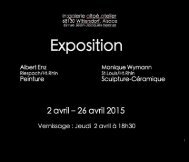AlbertEnz Monograf final
You also want an ePaper? Increase the reach of your titles
YUMPU automatically turns print PDFs into web optimized ePapers that Google loves.
(1). Another trend I want to focus on, which will be instrumental in tracing<br />
and contextualizing Albert Enz, is Informal Art. In 1951, Michel Tapié employed<br />
the term for the first time. More than an artistic movement, Informal Art was<br />
a different approach to representation in painting. Born in the post-war period,<br />
humanity as a whole, including artists, was deeply marked by dark,<br />
sad, and painful feelings. This pain, probably out of necessity, was represented<br />
in a new way, which also revealed a harsh critique of form.<br />
It's interesting to note how the works of these artists were a perfect expression<br />
of limitless liberation, emotion, spontaneity, and narration. In terms of<br />
painting techniques, they also differed from traditional ones: the use of spatulas,<br />
brushes, everyday objects, dripping or spraying paint was frequent.<br />
In this way, the artistic process transcended the boundaries of creativity,<br />
combining emotion with gesture. Albert Enz encompasses much of this history,<br />
starting from Post-Impressionism and reaching Informal Art, evident<br />
in both forms and colors, as well as content. Albert Enz's freedom is the<br />
meeting point of all avant-garde philosophies, where the implicit representation<br />
of the soul and emotions predominates.<br />
1 - Martin S., Futurismo, Taschen, Kòln, 2017, p.15<br />
22







